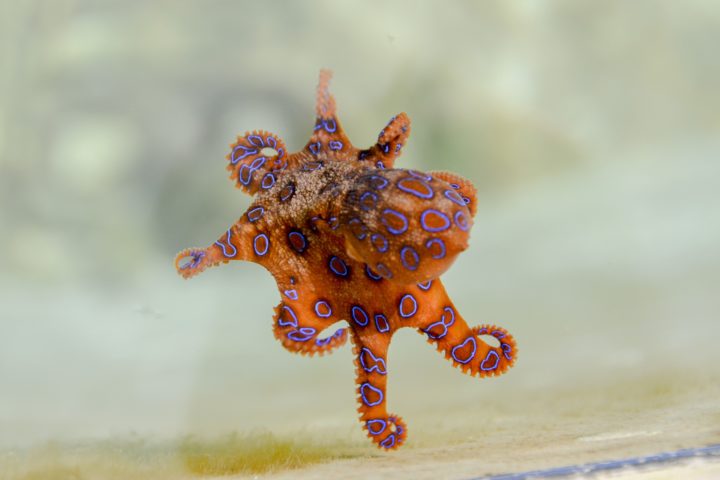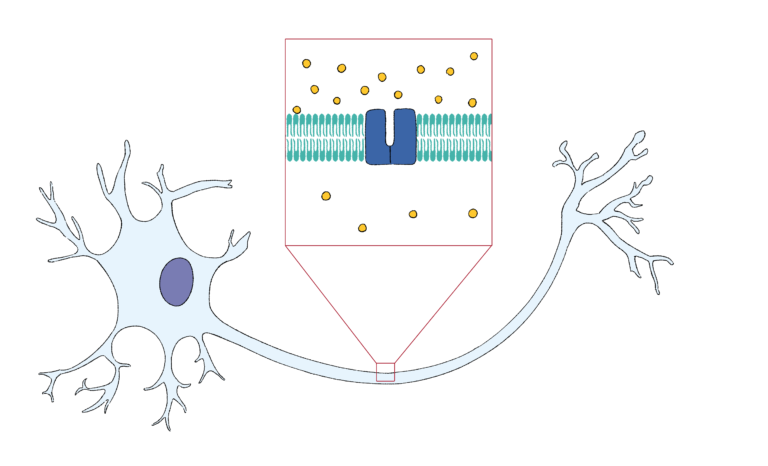The Amazing Cephalopods
By Sirius Lee 李揚

The Cephalopods
“Szechuan pepper. Salt. Chinese five spice. Grind. Seasoning into a bowl. Corn flour. Squid. Score. It helps to tenderize the squid. Cut. Tentacles halved and go straight into the seasoning. Now, we are ready to cook.” While Mr. Gordon Ramsay was demonstrating how to prepare the delicious cuisine of crispy salt and pepper squid, did you know that cephalopods like squids have been favored by scientists not only as food, but as research objects?
“Cephalo-pod,” literally means “head-foot” in Greek, and these animals are characterized by the presence of tentacles attached to their head. This class includes squids, octopuses, cuttlefishes and nautiluses. They are highly regarded, given titles such as “the smartest invertebrates” and “the alien intelligence,” and have been useful for understanding advanced cognitive evolution.
Their complex behavior never ceases to amaze us in the field or in the laboratory. Observation suggests that octopuses can learn spatial cues from the surroundings to help with their navigation, gaining spatial memory that prevents them from repeatedly scrounging the same areas for resources [1]. Cuttlefish can exert self-control and delay their actions in favor of immediate gratification (footnote 1), displaying a sign of decision-making [2]. Squids react to threats in a rapid manner and escape with their highly propulsive jets [3]. On top of their abilities to go on a furious fight of pushing and biting among the males in pursuit of a mate, cuttlefishes can also deploy tactics where they sneak around and mate with the hiding female without other males noticing [1].
Aside from their impressive behavior, their sophisticated skin, with color, pattern and texture changing features, is certainly one of their most extraordinary abilities. For camouflage, they first need to observe the surroundings. After analyzing the visual information, the brain will fire neural signals to millions of color-changing cells to create the camouflage pattern. Octopuses and cuttlefishes can further enhance the mimicry by morphing their skin into the 3D texture of the background, such as a sandy seafloor [1]. It takes literally the blink of an eye, about 200 milliseconds, to change their appearance [1]. This fascinating property has enabled them to survive with brilliant camouflage, crawling around without being detected.
Commonly Used Model Organisms
Our relationship with cephalopods is not limited to the appreciation of their external appearance and behavior. Groundbreaking discoveries have come from laboratory studies of their nervous system.
Led by Sir Alan Hodgkin, Sir Andrew Huxley and Sir Bernard Katz, squid were used in the early days of neuroscience as a system for experimenting with neuronal functions, including the nerve impulse. Certain squid neurons have remarkably long and thick (up to 1 mm in diameter) axons, the long projections that extend from neurons. These giant axons offer us a great flexibility for experiments, such as the insertion of electrodes for voltage and current measurement [4, 5]. Based on past observations that the intracellular sodium concentration inside the squid axon was lower than that of the sea water (external fluid), Hodgkin and Huxley conducted pivotal experiments and obtained results that suggest an influx of sodium ions during the transmission of electrical signals (footnote 2) [6]. This discovery has had a profound impact on neuroscience, uncovering the fundamental basis of how information flows in the nerve, as well as kickstarting the study of the role of ion channels in the process [4, 5]. Further investigations were also conducted by administering channel blockers (inhibitors) to modify the impulse. Further investigations revealed the involvement of additional ions that contribute to signal transmission in axons. [7]. Without a shadow of a doubt, the sacrifice of cephalopods has an undeniable significance in our quest for knowledge, especially in our comprehension of the nervous system.
A diagram showing the difference in sodium ion (yellow) concentration across the membrane of an axon, the long projection that extends from a neuron, which is responsible for communication between neurons.
Marine Organisms Are More Than Seafood
In the history of scientific research, marine organisms have been extensively studied to elucidate biological phenomena and structural designs. Apart from cephalopods, sea urchins have been used to study developmental biology, revealing the roles of different proteins in cell cycle progression, while sea slugs gave us a glimpse into how memory works. If you have the chance to interact with these friends of ours, what would you do?
1 Delayed gratification: A subject studied extensively in psychology, defined as “the ability to either forgo immediate temptation or to persist in an undesirable activity, in order to reach a later goal [8].”
2 Editor’s remark: If you are interested in how neurons fire a nerve impulse, you may search “action potential” on YouTube. The mechanism is covered in first-year biology and was once a topic in the abolished HKALE.
References:
[1] Hanlon R, Vecchione M, Allcock L. Octopus, Squid, and Cuttlefish: a Visual, Scientific Guide to the Oceans’ Most Advanced Invertebrates. The University of Chicago Press; 2018. Accessed June 29, 2021. https://press.uchicago.edu/ucp/books/book/chicago/O/bo33852490.html
[2] Schnell AK, Boeckle M, Rivera M, Clayton NS, Hanlon RT. Cuttlefish exert self-control in a delay of gratification task. Proc Biol Sci. 2021;288(1946):20203161. doi:10.1098/rspb.2020.3161.
[3] Shigeno S, Andrews PLR, Ponte G, Fiorito G. Cephalopod Brains: An Overview of Current Knowledge to Facilitate Comparison With Vertebrates. Front Physiol. 2018;9:952. doi:10.3389/fphys.2018.00952
[4] Purves D, Augustine GJ, Fitzpatrick D, et al. Neuroscience. 9th ed. Oxford University Press; 2021.
[5] Hodgkin AL. The Ionic Basis of Electrical Activity in Nerve and Muscle. Biological Reviews. 1951;26(4):339-409. doi:10.1111/j.1469-185X.1951.tb01204.x
[6] Hodgkin AL, Katz B. The effect of sodium ions on the electrical activity of giant axon of the squid. J Physiol. 1949;108(1):37-77. doi:10.1113/jphysiol.1949.sp004310
[7] Kusano K, Livengood DR, Werman R. Correlation of transmitter release with membrane properties of the presynaptic fiber of the squid giant synapse. J Gen Physiol. 1967;50(11):2579-2601. doi:10.1085/jgp.50.11.2579
[8] Twito L, Israel S, Simonson I, Knafo-Noam A. The Motivational Aspect of Children’s Delayed Gratification: Values and Decision Making in Middle Childhood. Front Psychol. 2019;10:1649. doi:10.3389/fpsyg.2019.01649